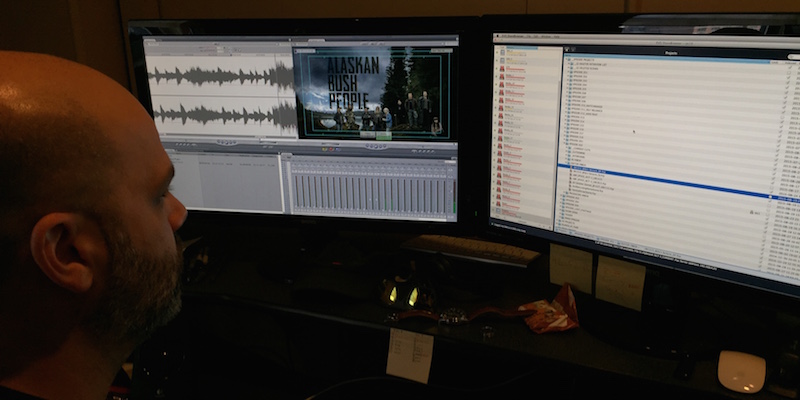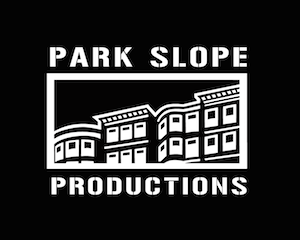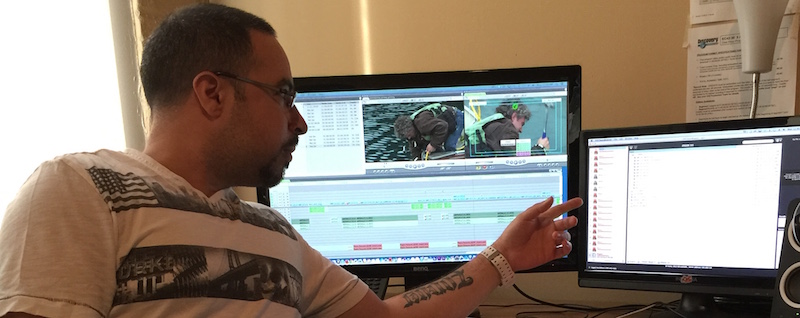Park Slope Productions is an award-winning producer of original programming for the likes of OWN, TLC and MTV, and knows what it takes to create engaging television. The production house pores over hundreds of new programming ideas all the time. So when an associate producer came upon a family of nine living “off the grid” in the rugged Alaskan wilderness, the Park Slope team knew it had found something unique.
Now in its second season on The Discovery Channel, “Alaskan Bush People” averages more than four million viewers per episode. Recently, the show scored the highest ratings in all of Friday night prime time.
Aside from its interesting characters, location plays a huge role in “Alaskan Bush People.” Everything is shot in Alaska, making shooting and producing more complex and challenging than anything Park Slope had taken on before. But location is just the beginning of what makes the show unique. The length and very nature of shooting, as well as the scope and number of people editing the show, make it an excellent showcase for the capabilities of the EVO shared media server.
The Next Phase of Reality Programming: The “Docu-Series”
Nothing about “Alaskan Bush People” is ordinary, including its format. Unlike a lot of so-called reality shows, “Alaskan Bush People” is shot like a documentary, according to Jose Berrios, post production supervisor for Park Slope Productions. In true documentary style, that means having to simultaneously shoot a lot of footage on as many as nine different cameras.
“It gets tricky,” said Berrios. “Normally there are four cameras on the family, but they will split up and go to different parts of the island, so the same story may be happening in two different places. Everything has to be shot at the same time so that the story stays in sync, and still makes sense by the time it reaches our story editors in New York.”
A variety of cameras capture the action on land and water. “Alaskan Bush People” uses XD cameras (Sony PMW 300), GoPros, drones and even helicopters. The show is created entirely from original footage, with none of it canned or from a library.
“Before EVO, producers and editors had to email each other to inquire about certain pieces of footage, and it was easy to lose track. With EVO, everything is constantly up to date. Editors can simultaneously work on different aspects of footage and see the most up to date version at any time.”
“At one point the family went fishing,” says Berrios, “We had seven GoPros stationed all around the boat, and another camera following the boat. All eight of those cameras have to be synced, so that when the story editors watch them, they are watching the exact same thing from different angles.”
Shaping all of that multi-cam footage into a whole happens on the other side of the continent in Park Slope’s midtown Manhattan studios. During months of rigorous on-location shooting, Park Slope uploads several terabytes of media every week to its EVO media server, where nearly two dozen producers and editors make it ready for prime time.
From Cubes to EVO
The first season of “Alaskan Bush People” consisted of five episodes, which required about 15 terabytes of footage. To store, edit and produce the footage, the Park Slope team, which started out rather small, used four individual 10 terabyte Thunderbolt-connected drives or “cubes” that shuttled among editors and were manually replicated and kept up to date. All of that changed when Discovery ordered more episodes — 16 to be precise, plus three specials.
Even before Discovery ordered Season 2, however, Park Slope encountered workflow issues with their Thunderbolt drive-based workflow. “We ran into a lot of issues with scratch audio [temporary narration],” says Berrios. “With the 10 terabyte cubes, we had to go around looking for who had what on their computers. There was a lot of email back and forth.”
During pre-production for Season 2, simple math dictated that the Park Slope team would need a media server to accommodate as much as six hours of footage per camera per day. So Park Slope got serious about finding a media server solution that would support a more sophisticated workflow involving more hands on deck and lots of multi-cam footage. It would prove to be a prescient decision, as Season 2 of “Alaskan Bush People” generated approximately 60 terabytes of media.
One of Park Slope’s media partners strongly recommended they look at the EVO Shared Media Server, which has become a standard for production teams all over the world. EVO provided a combination of flexible, high-performance storage — including the ability to configure the system as both Storage Area Network (SAN) and Network-Attached Storage (NAS) — plus the ability for team members to simultaneously work on separate projects in shared folders, all using the same media. EVO’s compatibility with major media editing applications, including Final Cut and Avid, also meant the Park Slope team was free to continue using its tools of choice.
In the months leading up to the start of shooting in September 2014, Park Slope conducted online research to identify servers that could do the job. The team explored potential setups and pricing and talked to different vendors. Based on service, hardware and price, Park Slope decided that EVO was the best solution to satisfy its complex workflow. Once delivered, Park Slope’s media partner had EVO up and running in less than an hour-and-a-half, and ready to start taking in footage for Season 2.
“Since we started, we have not had one issue. With the amount of deadlines we have, we can’t afford to have any hiccups at all. We pushed EVO to the limit and never experienced any kind of slowdown.”
For Park Slope, EVO’s biggest impact was its ability to streamline and simplify workflow across numerous producers and editors. Another major advantage for the Park Slope team was the “extreme friendliness” of the user interface. According to Berrios, it was critical that story producers felt comfortable using the system. Especially useful was EVO’s ShareBrowser app, the file finder and editor-friendly asset management software designed exclusively for media teams and packaged with every EVO system.
“ShareBrowser is super user friendly,” says Berrios. “A lot of people may not make a big deal about the interface, but all it takes is a 15 minute lesson, and when you have a team of this size, that’s really important.”
Like a Marathon
The production schedule for “Alaskan Bush People” is intense. Shooting for Season 2 ran from September through early December, then resumed in January and ran through March. All the while, an immense amount of footage poured in weekly from the field.
“Sixteen episodes is a lot for reality TV, or any TV,” says Berrios. “We actually grew the number of episodes during production and the staff kept growing. At our peak, we had a show runner, nine producers, two executive producers, seven editors and four assistant editors. I was the post supervisor. So we had around 24 total users on EVO reviewing and editing footage in Final Cut Pro at any given time.”
“Once the process starts,” says Berrios, “It’s like a marathon.”
Berrios and his staff take each drive of fresh footage from the field and upload it to the server. Assistant editors then use the EVO’s ShareBrowser software to organize the footage, breaking it down based on field notes, deleting dead air and “making it neat” for producers to “pull moments” and form ideas on how each episode is going to run. Then Park Slope’s editors begin shaping the episode scene by scene.
The biggest change for Park Slope was implementing a familiar “Avid-like” platform that makes sharing projects easy for the entire team. Each episode has its folder, and within each episode folder are workspaces for each individual producer or editor, where anyone can see the state of edited footage in real time. No more reconnecting through the previous storage cubes.
“Sometimes there will be six to seven scenes that happen in a given day,” says Berrios, “And you may have five or six producers watching that footage simultaneously. Everything has to be synced.” Before EVO, says Berrios, producers and editors had to email each other to inquire about certain pieces of footage, and it was easy to lose track. With EVO, everything is constantly up to date. Editors can simultaneously work on different aspects of footage and see the most up to date version at any time.
“We underestimated the amount of footage we took in,” says Berrios. “Given that and the number of people we have, it would be unthinkable doing this any other way. We wouldn’t be able to survive our workflow without EVO. Otherwise each staff member would need six cubes, and if you multiply that by 23 staff members, you get an idea of how impossible that would be. There was no other way to do this.”
More “Alaskan Bush People” Means More EVO
The Discovery Channel and Park Slope are now in pre-production for Season 3 of “Alaskan Bush People.” Just in time, the Park Slope production team has expanded its EVO system to 140 terabytes — more than twice the size of its Season 2 capacity.
“Since we started, we have not had one issue,” says Berrios. “With the amount of deadlines we have, we can’t afford to have any hiccups at all. We pushed EVO to the limit and never experienced any kind of slowdown.”
Berrios says that when Park Slope picks up another show, the production house will opt for EVO.
About Studio Network Solutions (SNS)
SNS shared storage solutions are at the core of optimized video workflow for professional content creation workgroups worldwide. The SNS EVO shared media storage server combines high-performance with extensive connectivity, including 10Gb/s Ethernet and Fibre Channel. With EVO’s included ShareBrowser asset management software, you can search, index, preview, tag, and verify video and project assets with no additional software required. NAS, SAN, or both at the same time, EVO is designed for online real-time video editing with leading video/audio applications including Avid Media Composer, Adobe Premiere Pro/CC, Final Cut Pro (FCP), Final Cut Pro X (FCPX), DaVinci Resolve, Pro Tools, and others.
Read more user stories or contact SNS now to see how the EVO shared media storage server can help your company.



